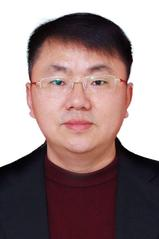Abstract:Blockchain is a chained data structure consisting of blocks linked in chronological order. Each block needs to maintain an identical, continuously growing, and immutable ledger backup locally; blockchain is a technology that enables the secure sharing of information. Data, obviously, is stored in a database. Transactions are recorded in an account book called a ledger. In this report, we will explain blockchain technology and preliminarily explore its potential application data security areas.
| Prof Erik CambriaNanyang Technological University, Singapore Biography: Erik Cambria is the Founder of SenticNet, a Singapore-based company offering B2B sentiment analysis services, and a Professor at Nanyang Technological University, where he also holds the appointment of Provost Chair in Computer Science and Engineering. Prior to joining NTU, he worked at Microsoft Research Asia (Beijing) and HP Labs India (Bangalore) and earned his PhD through a joint programme between the University of Stirling and MIT Media Lab. His research focuses on neurosymbolic AI for explainable natural language processing in domains like sentiment analysis, dialogue systems, and financial forecasting. He is recipient of several awards, e.g., IEEE Outstanding Career Award, was listed among the AI's 10 to Watch, and was featured in Forbes as one of the 5 People Building Our AI Future. He is an IEEE Fellow, Associate Editor of many top-tier AI journals, e.g., Information Fusion and IEEE Transactions on Affective Computing, and is involved in various international conferences as keynote speaker, program chair and senior program committee member. Speech Title: 7 Pillars for the Future of AI Abstract: In recent years, AI research has showcased tremendous potential to impact positively humanity and society. Although AI frequently outperforms humans in tasks related to classification and pattern recognition, it continues to face challenges when dealing with complex tasks such as intuitive decision-making, sense disambiguation, sarcasm detection, and narrative understanding, as these require advanced kinds of reasoning, e.g., commonsense reasoning and causal reasoning, which have not been emulated satisfactorily yet. The Seven Pillars for the future of AI (https://sentic.net/7-pillars-for-the-future-of-ai.pdf) address these shortcomings and pave the way for more efficient, scalable, safe and trustworthy AI systems. |
| Prof. Sudeep TanwarNirma University, India Biography: Sudeep Tanwar (Senior Member, IEEE) is working as a full professor at the Nirma University, India. He is also a Visiting Professor with Advanced Research Lab, Florida, USA, WSG University, Bydgoszczy, Poland, Jan Wyzykowski University, Poland, and University of Pitesti, Romania. He is senior member of IEEE and also Vice Chair of IEEE Computer Society Gujarat Section, India. He received B.Tech in 2002 from Kurukshetra University, India, M.Tech (Honor’s) in 2009 from Guru Gobind Singh Indraprastha University, Delhi, India and Ph.D. in 2016 with specialization in Wireless Sensor Network. He has authored 05 books and edited 25 books, more than 450 technical articles, including top cited journals and conferences, such as IEEE TNSE, IEEE TVT, IEEE TII, IEEE TGCN, IEEE TCSC, IEEE IoTJ, IEEE NETWORKS, IEEE WCM, ICC, IWCMC, GLOBECOM, CITS, and INFOCOM. He initiated the research field of blockchain technology adoption in various verticals in the year 2017. His H-index as per Google Scholar and Scopus is 85 and70, respectively. His research interests include blockchain technology, D2D communication, Deep Learning/machine Learning, wireless sensor networks, fog computing, smart grid, and the IoT. Speech Title: Integration of Blockchain and AI for Building Secure Healthcare Applications Abstract: The convergence of Blockchain and Artificial Intelligence (AI) promises transformative advancements in the healthcare sector. This integration enhances security, trust, and data management efficiency. Blockchain's decentralized ledger and AI's advanced analytics create a robust framework for managing Healthcare environments. This talk discusses opportunities, including improved cybersecurity, efficient healthcare management, and secure operations in Healthcare Applications. Also, highlight challenges such as high computational demands, latency, interoperability, and standardization must be addressed. Discussed opportunities and challenges, providing insights into future research and practical implementations to achieve secure, intelligent, and efficient next-generation Healthcare Applications. |
| Prof. Hongbing ChengZhejiang University of Technology, China Biography: Hongbing CHENG is currently a Professor in college of computer Science, Zhejiang University of Technology. He was a postdoctoral fellow of the Department of Computer Science and Technology of Nanjing University; was high-level talent of Six Talent Peaks in Jiangsu Province. At the same time, he is the Distinguished Professor of Huawei Network Security Foreign Training .Prof. CHENG have been to University of Manchester, University of Stavanger and Deakin University as Visiting scholar, visiting professor. He is the Team leader of Information and Privacy Protection Research, and has published numerous research papers in high-quality international journals and conferences. Prof. Cheng served as invited editor of several international journals in some international conferences; and has been invited to give keynote speeches and chair committees, reviewed papers for many international journals and conferences. His research interests include blockchain, cryptography, privacy preserving and information security, computer communications and cloud computing security. Speech Title: Blockchain and Data security |



